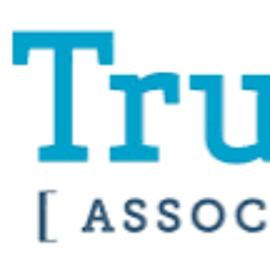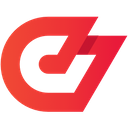Reading
What I’m reading — a list of articles, blog posts, twitter threads, and everything in-between. Is this recommended reading or a bookmarks list? You decide.
-
-
Competency ladders can help guide your point of view on product engagement and build empathy for your customers.
-
-
An executive with 8,000 indirect reports and 2000 hours of work in a year can afford to spend, at most, 15 minutes per year per person in th…
-
Every company faces a learning dilemma: the smartest people find it the hardest to learn.
-
New academic research has calculated that the lifetime cost of a small car—such as an Opel Corsa—is about $689,000, of which society pays $275,000.
-
-
Leadership without management: the what, the how, the tools, and how to measure success as a Principal+ engineer.
-
On the time for rest.
-
Change management is a big field, and it sounds scary because it says ‘management’, which is what managers do, right?
-
Making a decision as a group? Who gets a view or a voice? Who gets a vote or a veto? And why does ensuring that everyone knows in advance make a difference?
-
If we asked you what your current work priorities were, could you answer quickly and confidently? What about the priorities of the company…
-
Attracting talent at scale is more than just data. But a data-driven process makes it a lot easier
-
Online textbook for CS 161: Computer Security at UC Berkeley.
-
This post is a rebuttal to the recent guide on “Securing the Software Supply Chain” published by CISA, ODNI, and the NSA.
-
The Trust Equation is now the cornerstone of our practice: a deconstructive, analytical model of trustworthiness.
-
Having established a team-based organization, the next key is putting the teams to use. One way to generate both faster decision speed and unlock engagement is by decentralizing decision making…
-
A set of capabilities that drive higher software delivery and organizational performance, as identified and validated by the DevOps Research and Assessment (DORA) team.
-
Wrapping up my series on delegation with an example: how to delegate meeting attendance.
-
Declaring productivity is easy. Measuring productivity at scale is hard. The SPACE framework developed by GitHub’s Nicole Forsgren and colleagues addresses this challenge.
-
Do you have trouble fitting “all” of the necessary work into an iteration? Your managers might want to push you to do more. Or, the product owner thinks you can do more. Or, the team wants to do more (see Beating a Team’s Goal.) Agile approaches are not about doing more. Agile approaches encourage us […]
-
All carts, no horses.
-
How to use systems thinking to drive improved outcomes in complex situations.
-
Gokul Rajaram shares a framework that he’s used at Square and Caviar to make the most difficult decisions, all while assigning ownership, being inclusive and coordinating execution among all stakeholders.
-
There are a lot of different low-code/no-code options out there. Understanding their strengths and weaknesses will help you pick the right…
-
-
Chapter 1
-
-
Resignations are at an all-time high, and companies desperate to fill vacancies are trying everything from pay raises to trendy perks. But those interventions are falling short, because the real problem, as the author explains, is that so many jobs are stressful, meaningless, and unlovable. Buckingham’s data on what keeps employees engaged (from his work at ADP Research Institute) suggests that companies should change their approach to performance management to take advantage of each employee’s unique skills and passions. That necessitates three mindset shifts: viewing employees as the key stakeholders in the organization; moving away from standardization in performance management tools; and trusting employees to accomplish their performance goals the way they see fit. No company today is yet the full “Love + Work” organization that Buckingham describes, but lululemon, Walmart, Amazon, McKinsey, and Cisco are among those that have begun to embrace some of its characteristics and have seen improvements in both retention and overall performance.
-
What is Agile? And where does it come from?
-
Tech and design workers don’t just have pandemic burnout. They have pandemic clarity. It’s time for organizations to catch up.
-
ow we act depends on how we understand the situation we are in. Our understandings often seem obvious to us, as if they were given by the situation itself. But people can come to very different understandings, depending on what aspects of the situation they notice and how they interpret what is going on. The […]
-
An investigation of three schools of thought on team development and high-performing teams
-
A term suggesting rock bottom stops meaning rock bottom when when we’re all there and, somehow, still going. Is our definition of burnout all wrong?
-
It’s no wonder that innovation is so difficult for established firms. They employ highly capable people—and then set them to work within processes and business models that doom them to failure. But there are ways out of this dilemma.
-
History It is necessary to improve self-awareness and personal development among individuals when they are in a group. The ‘Johari’ window model is a convenient method used to achieve this task of understanding and enhancing communication between the members in a group. American psychologists Joseph Luft and Harry Ingham developed this model in 1955. The
-
Expressing disagreements is not always pleasant, but they might be better than misunderstandings. In some cultures, it causes miscommunication; in some of them doesn’t.
-
Diversity and Inclusion Work, Coaching, and More by Paloma Medina
-
You might have heard about the Basecamp culture changes last week. I’m sure you heard about Google’s culture problems several years ago. These problems are issues of culture: specifically what we can and cannot discuss. What do “makers”—technical people—in any industry need to discuss? Big product issues: Why we are working on this project at … Continue reading “Healthy Organizational Cultures Focus on Humanity and Connection (Not Your Whole Self)”
-
The inflexibility in decision-making is at the root of various problems. Many leaders either use a lot of authority or seek consensus. What they need is a pendulum.
-
Slides and notes for the Being Glue talk.
-
To be a great hiring manager don’t be distracted by rockstar engineers, study up on network theory.
-
Role of release engineer in software engineering, focusing on their skills, tools, and practices to ensure reliable and repeatable software releases.
-
Managing change in complex systems such as teams, businesses, and societies can be difficult. That’s why I appreciate when I find solid models that try to provide support in people are workin…
-
We have 3 triggers that activate when we receive feedback. We feel that the feedback is wrong, it comes from a wrong person or it threatens our identity.
-
I’ve been asked a lot lately to explain what Engineering Enablement really means. Here is my definition.
-
The forming–storming–norming–performing model of group development was first proposed by Bruce Tuckman in 1965, who said that these phases are all necessary and inevitable in order for a team to grow, face up to challenges, tackle problems, find solutions, plan work, and deliver results. He suggested that these inevitable phases were critical to team growth and development. This series of developmental stages has become known as the Tuckman Ladder.
-
Download this paper to learn how the right technology can help make No Wrong Door a reality for health and human services providers.
-
Drawing from her career at PayPal, Intercom, GetYourGuide, and now as founder/CEO of Arise Leadership (an online leadership program that empowers women) Shivani Berry shares her playbook for attracting more feedback.
-
Platforms like OnlyFans mean people with big followings online can earn money. Where does that leave the sex workers who were there first?
-
Consensus decision-making means everyone explicitly agreeing to the proposed idea. The leader needs explicit agreement from everyone and shouldn’t assume consensus in the absence of objection.
-
Software systems are sociotechnical. I don’t think software professionals spend enough time discussing the challenges that span software and personal aspects. When we look at software through a sociotechnical lens, we begin to appreciate the complexity inherent in software development and operations. The systems we are building and operating are constantly being modified by different people, with different contexts, at different times, who may or may not speak to each other directly. This emergent collaboration can present unique challenges that are fun to navigate.
-
Big tech relies on the victims of economic collapse.
-
feature art Emotion Sensation Wheel: A new kind of feeling wheel. A therapist-designed resource designed to help make connections between our brains and bodies. Unlike a traditional feelings wheel (first published in 1982 by Gloria
-
Surveys are critical in order to get useful customer feedback quickly. Keep reading for the most effective survey designs.
-
By the way, you can listen to me read this post aloud on my Patreon, along with many other audio recordings. In the last post about remote work, we talked about technical difficulties with remote m…
-
A high-level overview to highlight common legal issues government agencies may face when participating in the open source community
-
Learn how Atlassian product managers influence without authority
-
In this o11ycon session, Charity and Christine joined Peter Alvaro for a chat on where observability might be headed for the next three years.
-
If you want to know, one hundred percent, that you’re not an impostor, do something no impostor would ever do: out yourself. Here’s why.
-
I’ve been talking to an increasing number of people who struggle to answer the question “So what do you do?” These are UX designers who end up tackling a large part of development, developers who find themselves running strategic efforts at their job, and other jack-of-all-trades people who run the
-
-
The ‘How might we’ design prompt is insidious, and it’s time to bury it.
-
Wondering how to get your new developer assimilated and contributing as quickly as possible? Learn how to plan their first 90 days!
-
Does this sound familiar? Your team members so badly want to take work off your plate and prove they can handle things on their own. You want to give your team the independence they seek, but have this nagging feeling that they may not be quite up for the challenge.
-
Twitter’s former Director of Engineering shares the plan he uses to transform engineers into successful and happy managers.
-
Suppose we’ve had a recent error with a Kubernetes cluster. As often happens with a problem in our systems, we noticed it first in terms of the visible error, which we could state as “Builds did not complete.” Now we want to trace backwards to figure out what happened. A common technique is the “Five Whys” popularized by Lean thinking. So we ask “Why did builds not complete” and we find “Kubernetes could not start the pod, and the operation timed out after 1 hour.
-
‘Act without expectation.’ ~Lao Tzu Post written by Leo Babauta. How much of your stress, frustration, disappointment, anger, irritation, pissed-offedness comes from one little thing? Almost all of it comes from your expectations, and when things (inevitably) don’t turn out as we expect, from wishing things were different. We build these expectations in our heads […]
-
When you accept a new job, you don’t know who you are going to work with, what you are going to be doing, and how much (or little) you’re going to like it. Call everyone you want. Ask their opinions. Trust the fact that a good friend referred you for the gig. Revel in the idea that the company h
-
For varying levels of seniority, from senior, to staff, and beyond.
-
Anchoring bias is the tendency to accept the first bit of information you learn about a given topic, which affects decisions based on that info.
-
Software architecture documentation helps people in understanding the software architecture of a system. In practice, software architectures are often…
-
-
In today’s excerpt – thanks to the work of Daniel Kahneman and others, we now increasingly view our cognitive processes as being divided into two systems. System 1 produces the […]
-
From Dismantling Racism: A Workbook for Social Change Groups , by Kenneth Jones and Tema Okun, ChangeWork, 2001
-
When employees share novel ideas and bring up concerns or problems, organizations innovate and perform better. But managers do not always promote employees’ ideas. In fact, they can even actively disregard employee concerns and act in ways that discourage employees from speaking up at all. While much current research suggests that managers are frequently stuck in their own ways of working and identify so strongly with the status quo that they are fearful of listening to contrary input from below, new research offers an alternative perspective: managers fail to create speak-up cultures not because they are self-focused or egotistical, but because their organizations put them in impossible positions. They face two distinct hurdles: They are not empowered to act on input from below, and they feel compelled to adopt a short-term outlook to work.
-
Design thinking is, at its core, a strategy to preserve and defend the status-quo – and an old strategy at that. Design thinking privileges the designer above the people she serves, and in doing so limits participation in the design process. In doing so, it limits the scope for truly innovative ideas, and makes it hard to solve challenges that are characterized by a high degree of uncertainty – like climate change — where doing things the way we always have done them is a sure recipe for disaster. The alternative is a design process where the designer is dethroned and where design is less a step-by-step march through a set of stages and more of a space where people can come together and interpret the ways that changing conditions challenge the meanings, patterns, and relationships that they had long taken for granted.
-
-
-
People refer to various forms of malaise as “burnout,” but it’s technically a work problem. And only your employer can solve it.
-
Therapist Jessmina Archbold (publicly known as Minaa B.) shares her detailed guide to deeper self-care work, pushing back against common myths, offering up tactical advice and making the case for focusing on boundaries.
-
Making your life easier as an open source maintainer, from documenting processes to leveraging your community.
-
-
Deploying something useless into production, as soon as you can, is the right way to start a new project. It pulls unknown risk forward, opens up parallel streams of work, and establishes good habits.
-
How an African-American composer’s works were saved from destruction.
-
-
This post is all about speculative compilation, or just speculation for short, in the context of the JavaScriptCore virtual machine.
-
Here’s a quick quiz to assess the health of your 1:1s.
Think of one of your direct reports and answer the following questions with "yes", "no", or "I don’t know":
/4 -
Molly Graham helped forge a work culture at Facebook that’s withstood huge amounts of growth. Today, she’s something of a rapid scaling expert. Here’s the key to doing it right, she says.
-
-
Adam Drake is an advisor to scale-up tech companies. He writes about ML/AI/crypto/data, leadership, and building tech teams.
-
Y’all know how crucial I think one-on-one’s are for managers to get to know their direct reports: what they need from their manager, how they like feedback,…
-
I had dinner this past Monday night with my old college friend, Rob. Rob lives in Vancouver and I live in Boston, so it doesn’t happen very often. In fact, it’s been 15 years since we’d last seen each other. Fortunately, and as is often the case with people who’ve seen you drunk, high, naked and stupid (usually not all at once), it didn’t take long to get reacquainted. Rob had asked me to pick a restaurant downtown and I settled on The Black Rose, a spot so quintessentially Boston […] Click to read more…
-
… and stop doing things that make sense
-
Joining strategy together with the execution of the right solution challenges most teams today. It’s difficult for many reasons. Defining a strategy is not a static exercise. Predicting the future is difficult, full of uncertainty, and new information is always being discovered. Complicating things further, teams often divide responsibility for strategy and execution. This makes it harder to adapt to new information.
-
Toto Macau semakin banyak diminati sebagai pilihan alternatif, Live Draw Toto Macau hadir untuk memudahkan akses result Toto Macau.
-
-
-













